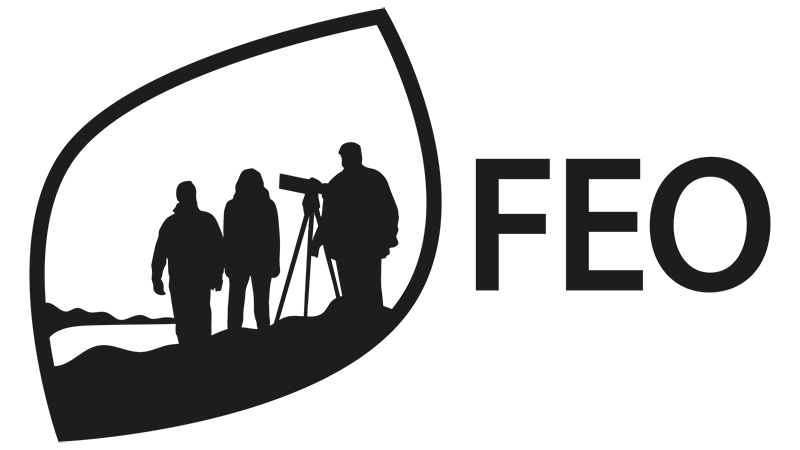Original 22.4.2024, Finnish Environment Institute
The significance of nature data in society has grown significantly in recent years. Understanding biodiversity and ecosystem functioning is fundamental for an ecologically sustainable society, nature conservation, the sustainable use of natural resources, and as the basis of the green economy. International biodiversity agreements, the European Union’s biodiversity strategy and national and local decision-making in both public and private sectors require increasingly precise, up-to-date, and diverse information about nature.
In the Finnish Ecosystem Observatory project (FEO, 2020–2024), the status of biodiversity and ecosystem monitoring in Finland was mapped out. The project investigated the use of monitoring methods based on field observations, remote sensing, eDNA, other molecular biological techniques and modeling, and assessed their future potential applications.
“In the future, society needs a much broader range of information about nature to support sustainability transformation. Information is needed for example in calculating the environmental footprint of businesses. The Finnish Ecosystem Observatory provides an excellent service platform for a comprehensive examination of nature data for various data users,” says Leif Schulman, Director-General of the Finnish Environment Institute.
“In the Finnish Biodiversity Information Facility we have already managed to compile species-related data into a coherent and open entity. Next, it is time to develop similar solutions that facilitate the use of habitat and ecosystem data,” Schulman continues.
Collecting nature data requires extensive collaboration
The FEO project has involved collaboration with various stakeholders producing and using nature data.
“For example, in collaboration with the Finnish Meteorological Institute, we have developed methods based on air-eDNA monitoring and modelling, which can assess the composition and distribution areas of fungal communities based on airborne fungal spores and provided a distribution channel for weather radar data describing the migration of birds and insects. Together with the Natural Resources Institute Finland, we have developed and tested indicators that provide new information on biodiversity as part of the National Forest Inventory,” says Research Professor Petteri Vihervaara from the Finnish Environment Institute, who is responsible for the project.
Various uses of nature data have been piloted, such as the ecosystem accounting compiled by Statistics Finland, online educational material for schools produced by the Finnish Association for Nature and Environmental Schools, and in the audiovisual art production by Joona and Tapani Toivanen.
“One of the most far-reaching results of the project is the establishment of the National Coordination Group for Nature Information (Lukki). There are 17 organisations involved in this coordination group, and it implements the development programme for nature data in Finland,” says Vihervaara.
The development of biodiversity and ecosystem monitoring is increasingly taking place in collaboration with international networks and the European Union. The primary funder of the FEO project is the Ministry of the Environment. The FEO project was funded primarily by the Ministry of the Environment.
“The total budget of the project has been over 6.3 million euros. It is a big investment in nature data development in Finland,” says Laura Höijer, Research Director at the Ministry of the Environment. “With this investment, Finland is a pioneer among European countries in terms of coordinating biodiversity and ecosystem monitoring and data management.”
Höijer sees it as a great achievement that the methods and solutions developed in Finland are being widely monitored and replicated, for example, within the European biodiversity partnership program involving over 40 countries (Biodiversa+).
“For example, the updated and automated indicators distributed at the Luonnontila web service, developed in connection with the FEO project are a unique example of processing observations made by, for instance, citizen scientists into a comprehensive dataset serving society and sustainability goals broadly,” says Höijer.
Nature data will be available in one place in the future
To improve the accessibility, findability, and interoperability of nature data, the FEO project has produced the Luontotieto – Finnish Nature Information Hub website, which provides comprehensive information on nature and habitat types. The new site also provides an overview of Finland’s biodiversity and ecosystem monitoring efforts, as well as other web services collecting information, such as the Luonnontila web service for biodiversity indicators, and the online service for the Red List of habitat types, which compiles the status of the threatened habitat types in digital form.
In addition, old paper-based habitat type data were digitized into spatial data format, and previously unpublished occurrence data for habitat types, especially for mires and herb-rich forests, were published. A data architecture of the national management of habitat type information was also prepared. Possible solutions for more efficient utilization of municipal habitat data were also investigated, and a digital platform for habitat surveys was tested. “Through the collaboration model established in this project, the comprehensive monitoring, assessment, and research of biodiversity and ecosystem status, as well as the management of related data, are supported. This is a good basis for continuing and deepening cooperation for the benefit of Finnish nature,” concludes Research Professor Petteri Vihervaara.
Project website: https://feosuomi.fi/
Luontotieto platform: https://luontotieto.syke.fi/
More information:
Petteri Vihervaara, tutkimusprofessori, Suomen ympäristökeskus, etunmi.sukunimi@syke.fi, p. 0295 251740
Ida Palmroos, projektikoordinaattori, Suomen ympäristökeskus, etunimi.sukunimi@syke.fi, p. 0295 252235
Peter Kullberg, ryhmäpäällikkö, Suomen ympäristökeskus, etunimi.sukunimi@syke.fi, p. 0295 251965
Laura Höijer, tutkimusjohtaja, ympäristöministeriö, etunimi.sukunimi@gov.fi, p. 0295250139
Joona Lehtomäki, erityisasiantuntija, ympäristöministeriö, etunimi.sukunimi@gov.fi, p. 029 5250016
